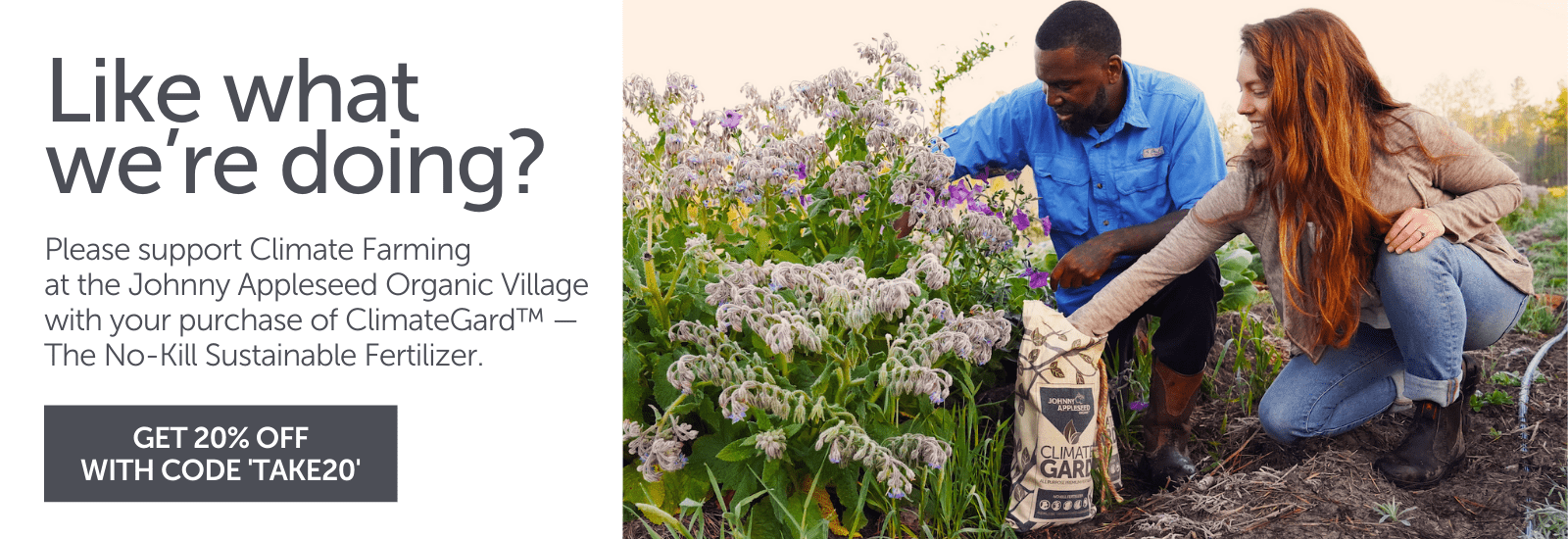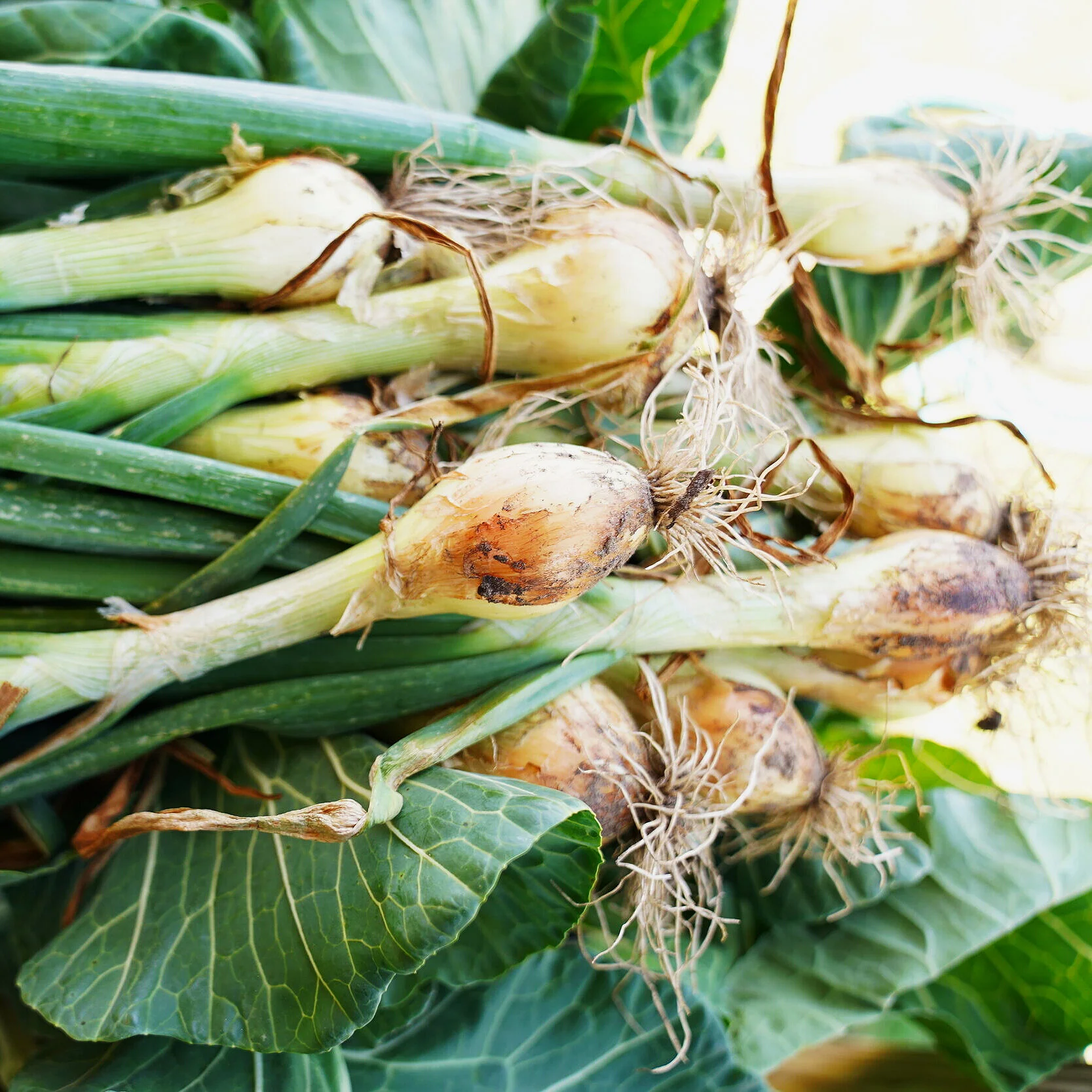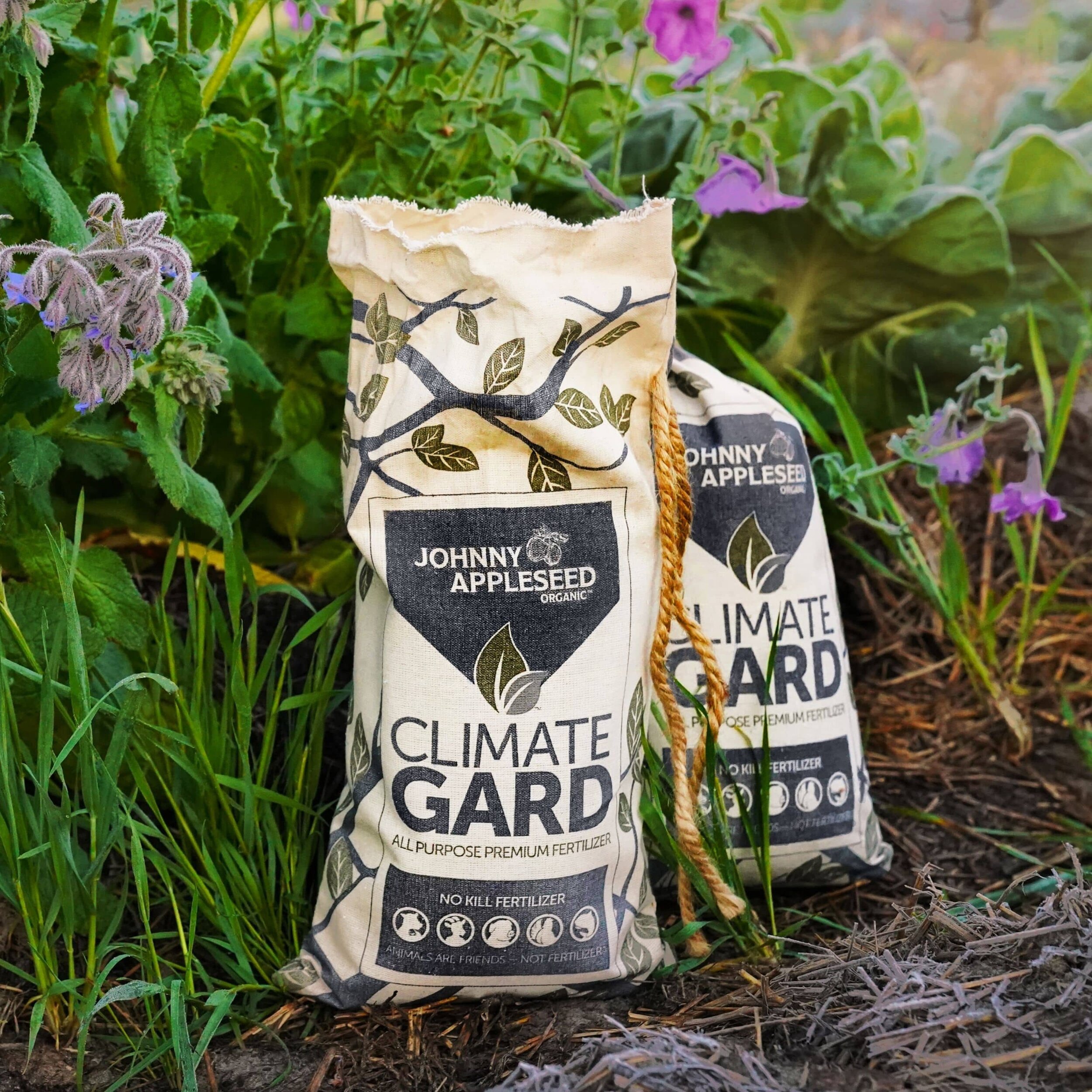How To Cure and Store Onions
By Mikael Maynard
If you are like us, onions are an essential part of flavoring your main evening meal. We eat at least one, sometimes two, onions per day — and when you cook for yourself about 300 days of the year, that adds up quickly. Since we just harvested onions on the farm, it’s crucial that we go through the process of curing and storing them for long term usage.
The exciting news is there are many ways to go about doing this! But before we get into that, let’s talk about how to tell when your onions are ready for harvest, the reasoning behind curing onions, how we built our onion curing tables, and a few other budget-friendly, small-scale curing options that may be a better fit for you. Finally, we’ll cover proper storage techniques!
When are onions ready for harvest?
According to University of Massachusetts Amherst:
“Onions are ready for harvest when at least half the leaves are dead. Tops are beginning to fall in many fields…. If you wait until all the leaves are dead and dry, it’s likely that the outer skins will be loose rather than firm, which may not hurt the keeping quality but the onions will not look as nice. However, pulling too green will make it difficult to cure them well. Harvest when the weather is dry; harvesting after a rainfall or when the humidity is high increases susceptibility to post-harvest disease.”
Why cure onions?
Curing is necessary for long term storage since uncured onions are susceptible to rot. Gardening expert Barbara Pleasant explains in her blog on ‘Curing Onions for Storage’:
“As for full-season onions with good storage potential, commercial onions are typically cured at very warm temperatures for six weeks, and then gradually cooled down to refrigerator temperatures. However, recent research indicates that curing onions naturally, by keeping them in a warm, dry place for a month, will work just as well.Thinking it might save energy, a team of UK researchers set onions to cure at various temperatures, and found that 68°F (20°C ) worked almost as well as 82°F (28°C), the standard recommended temperature for this process.”
How we cured our onion harvest
We chose to make curing tables to cure our onion harvest because it allowed us to stack them on top of each other and cure more onions in a smaller amount of space.
Materials used to make our onion curing table include:
(8) 2’ long 2x4s
(17) 11’ long 1x1s
(2) 11’ long 2x4s
(4) 2’9” long 2x4s
Drill
2” Screws
2” Nails
Nail gun or hammer
The steps to make the table are:
Build the table frame with the (2) 11’ long 2x4s and (4) 2’9” long 2x4s. Drill them together at the corners, and as supports in the center with screws.
Attach the legs using the (8) 2’ long 2x4s, placing two at each corner to make a 90 degree angle for each leg.
Attach the (17) 11’ long 1x1s on 1” spacing on the top of the table, with nails going through the frame and center support 2x4s.
Other ways to cure onions
If building your own table sounds daunting, fret not! Curing your onions can be done in many ways. You can simply:
Lay them on the floor of a shed out of the sun
Use a stand alone clothes drying rack
Make a frame with 2x4s and attach poultry netting to it
Make a cylinder out of cattle wire
Repurpose a non pressure treated pallet
Repurpose an old metal utility rack
There are many options to choose from that will fit your budget, time, space and skillset!
Storing onions
There are many ways you can store onions, as well. You can braid them together and hang them, or store them in hanging mesh bags. Whichever method works best for you, just know that to store them for a long time, they need to be in a cool, well-ventilated place out of direct sunlight. When you separate them for storage, be sure to organize them and bunch together the ones you want to use up first! Rule of thumb: use any onions that were flowering first, then use the ones that have the thickest necks!
Conclusion
Now you have all the tools you need to harvest, cure, and store your onions! Have fun curing and storing those onions away!
Sign Up for Newsletter
Follow Us on Social
Cutting-edge microbiology
No kill formula
Superior plant nutrition derived from the most ethical, sustainable sources available.
Produces the same results as conventional fertilizers without the negative environmental impacts.
Each ClimateGard pellet is infused with micronutrients, silicon, humic acid and a high-performance blend of living bacteria and fungi.
Delivered in an environmentally friendly organic cotton bag with a compostable inner liner.
Will continue to enrich your soil long after application.
$39.95 for 7.5 pound bag | $69.95 for 15 pound bag.




